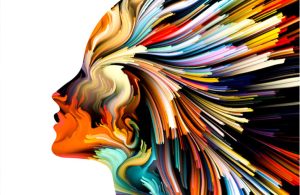One of the first things clients notice about a company is its printed material. From signs to elevator buttons, print design is everywhere. From signage in retail stores to T-shirts, print design communicates information. Here are a few things to keep in mind while choosing a design firm. They should be able to create a professional design that fits the company’s branding guidelines and budget. In addition to print materials, media companies often produce websites and web advertisement campaigns.

When choosing a designer, make sure you choose one who is well-versed in all aspects of printing and graphic design. Graphic designers need to be aware of the specifications of each type of printing to ensure that their work is printed properly. Using the wrong technology can ruin your piece. It’s important to know which techniques work best and which don’t. The following are some common mistakes that can lead to shoddy print quality.
Use high-quality images. Using low-resolution images may affect the appearance of the print. Pixelation occurs when you stretch a low-resolution image and it looks grainy. Choosing the wrong font for your printout can delay the project or even cause it to go beyond the original specification. If you’re unsure, ask your graphic designer to send you a sample of what you want. Make sure you choose one that uses CMYK color space and is compatible with your chosen media.
A printout will be in CMYK color space. Because this is a common color space, you’ll need to choose a printer that supports CMYK. This will ensure that your printed materials will look consistent across different mediums. If you’re working with a web designer, be sure to consider a CMYK color space when choosing a color scheme. It can save you a great deal of time and money in the long run.
Another area of graphic design that requires experience is printing. Print design is an extremely varied area of commercial art. Some of the most common types of print design include magazine layouts, book covers, greeting cards, packaging, textile prints, and catalogs. These designers need to be skilled and experienced at transferring design ideas from one medium to another. And they must be willing to work as a team to make sure their work is always ready for the next step.
Another way to get a job in graphic design is to complete an online course. While online degrees are useful, a formal education can be even more important. It allows you to develop your skills, build a portfolio, and interact with professors and fellow students. Ultimately, formal education helps you get work as a designer in a more professional setting. It also provides an opportunity to try new things and fail before you’re ready to be hired by a company.
The history of graphic design goes back more than 500 years. The development of printmaking techniques has greatly influenced graphic design, and there are many different types of printing technologies available today. Before the twentieth century, print design relied on mechanical processes such as lithography and letterpress. According to Hollis, Richard, and Michael S. Levy, the first graphic design textbook, the first book to feature an entire title page, identified the author, printer, and date, was published in 1476.
There are many different types of design, including environmental and commercial. Environmental graphic design has historically produced static print pieces, but digital interactive displays continue to become increasingly popular. In contrast, graphic art can take many forms and can be anything from fine art to decoration to storytelling illustrations. So, what is the difference between these two types of design? We’ll discuss this in more detail later. Once you’ve done that, you’ll be well on your way to becoming a creative professional in graphic design and printing.
There are many similarities between web and print design. Although they both utilize similar tools, file formats, and workflows, there are also some key differences between the two. Regardless of how similar you are to one another, it’s important to remember that they are very different. If you want to design for both, you should be familiar with the differences between the two. In this way, you’ll be able to design something that’s perfect for your needs.
The history of graphic design and printing is rich with examples of collaborations between a variety of specialists. For example, many of the artists of the 18th century specialized in book illustrations. For example, French artist Charles Eisen illustrated the poet Jean de La Fontaine’s Contes et nouvelles en vers (1762) with intricately framed letters and ornaments. His work is an important example of Rococo book design and printing.